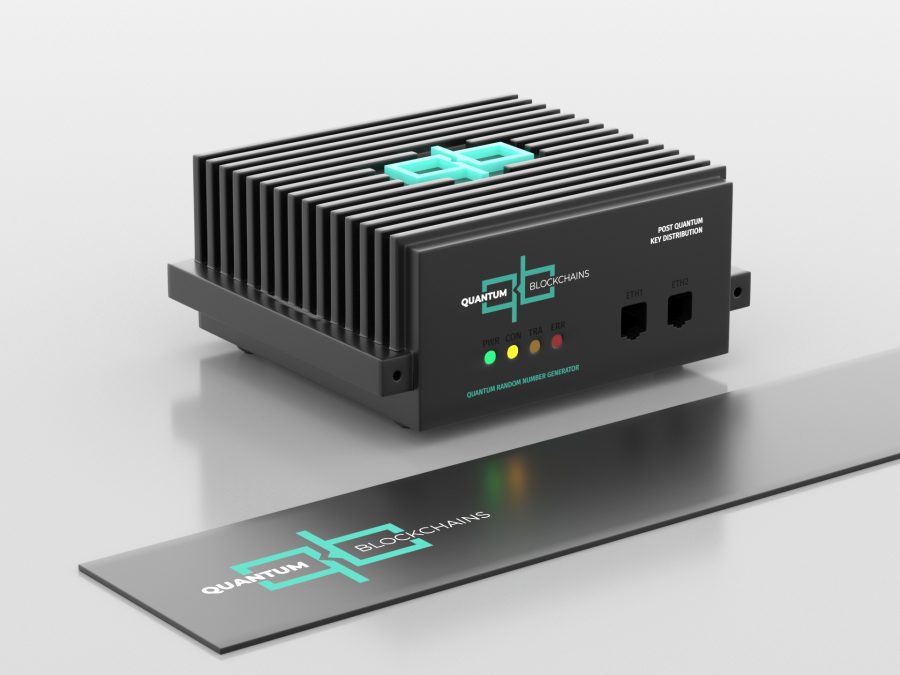Quantum-resistant cryptography for blockchain is the next frontier in securing our digital future. As quantum computers threaten to crack today’s cryptographic defenses, we need stronger protection. In this post, we’ll explore why current blockchain security may be vulnerable and how quantum-resistant cryptography could be the key to staying ahead of the curve.
The Quantum Threat: What Blockchain Faces
Quantum computing represents a revolutionary shift in computational power. Unlike traditional computers, which process data in binary, quantum computers use quantum bits, or qubits, that can exist in multiple states at once. This superposition allows quantum computers to perform calculations at unprecedented speeds, making them far more powerful than today’s digital systems. While this technology offers incredible potential for scientific and industrial advancements, it poses a significant threat to blockchain security, especially in the realm of cryptography.
Blockchains rely heavily on cryptographic protocols like public-key encryption to secure transactions and data. However, the speed and power of quantum computing could potentially break these encryption methods, exposing blockchain networks to cyber threats. For example, quantum algorithms like Shor’s algorithm could efficiently solve the mathematical problems that underlie RSA and ECC encryption — the very backbone of today’s blockchain security. This means that what we currently consider “safe” could become obsolete in the face of future quantum capabilities.
Addressing the Vulnerabilities: Quantum-resistant cryptography for blockchain
To safeguard the integrity of blockchain in a quantum-powered future, the development of quantum-resistant cryptography for blockchain has become imperative. These new cryptographic methods are designed to withstand the powerful capabilities of quantum computing. Researchers have proposed several approaches, each rooted in post-quantum cryptography, to ensure blockchain networks remain secure.
Lattice-Based Cryptography: A Robust Solution
One of the leading contenders in quantum-resistant cryptography is lattice-based cryptography. This technique builds cryptographic structures that are highly resistant to attacks by quantum computers. The lattice problems it is based on are computationally difficult for both classical and quantum systems to solve, making them a promising foundation for securing blockchain networks. By using lattice-based encryption methods, blockchain applications can continue to rely on cryptography to secure data and transactions even in the quantum age.
Hash-Based Signatures: A Quantum-Safe Approach
Another powerful post-quantum cryptographic method is hash-based signatures. This technique utilizes hash functions, which are mathematical algorithms that generate unique outputs for each input. Hash-based signatures are designed to be resistant to quantum computing’s speed and ability to break current signature schemes. These signatures are particularly effective for blockchain’s transaction verification process, ensuring that digital signatures remain secure even in the face of quantum decryption methods.
The Role of NIST in Defining Quantum-Safe Standards
As the threat of quantum computing continues to grow, global organizations are taking proactive steps to ensure the security of digital infrastructure. The National Institute of Standards and Technology (NIST) has been leading efforts to establish quantum-resistant cryptographic standards. Through a rigorous process of evaluation and testing, NIST is identifying and recommending cryptographic algorithms that can withstand quantum attacks.
NIST’s focus is on selecting algorithms that will not only be resistant to quantum decryption but also maintain efficiency and scalability in real-world blockchain implementations. Their process involves assessing a wide range of algorithms, from code-based cryptography to multivariate polynomial cryptography, with an eye toward the future-proofing of blockchain systems. NIST’s work is instrumental in shaping the development of quantum-resistant blockchain technologies, ensuring that blockchain remains secure and reliable long after quantum computing becomes mainstream.
Implementing Quantum-Proof Blockchain Solutions
In response to the growing quantum threat, the blockchain community is working on integrating quantum-resistant protocols into existing systems. These solutions are designed to safeguard data integrity and ensure that blockchain networks are prepared for a future dominated by quantum computing.
Quantum Key Distribution (QKD): The Future of Secure Communication
One of the most promising quantum-safe technologies is Quantum Key Distribution (QKD). QKD uses the principles of quantum mechanics to securely distribute encryption keys between parties. What makes QKD unique is its ability to detect any eavesdropping attempt on the key exchange. If a hacker tries to intercept the communication, the system will recognize the disruption and alert the parties involved.
While QKD has the potential to revolutionize the way blockchain networks share keys, the technology is still in its early stages. Currently, QKD is most effective over short distances, but research is ongoing to overcome its limitations and expand its practical application. As QKD evolves, it could become a key component of quantum-resistant blockchain systems, providing an additional layer of security for digital ledgers.
Transitioning to Quantum-Resistant Digital Signatures
As part of the effort to protect blockchain from quantum risks, the transition to quantum-resistant digital signatures is essential. Unlike traditional cryptographic signatures, which rely on algorithms vulnerable to quantum computing, these new signatures use post-quantum techniques like lattice-based cryptography and hash-based structures. The adoption of these new digital signature methods ensures that blockchain transactions remain verifiable and secure, even in a quantum-powered world.
Moreover, the shift to quantum-resistant algorithms isn’t just a theoretical exercise; it’s already happening in blockchain development. By integrating quantum-safe digital signatures, blockchain developers are future-proofing their networks, ensuring that these systems will continue to function securely as quantum technologies mature.
Preparing Blockchain Infrastructures for a Quantum Future
The future of blockchain security lies in preparing for a world where quantum computers are commonplace. Quantum-resistant ledger technologies (QRL) are emerging as the new standard for blockchain infrastructure. These technologies employ cryptographic techniques designed to withstand quantum attacks, ensuring that blockchain systems remain operational and secure.
For instance, lattice-based encryption and hash-based signatures are becoming core components of quantum-safe blockchain solutions. These new tools make it virtually impossible for quantum computers to break through, providing a robust defense against potential quantum threats. As more blockchain networks transition to quantum-resistant systems, the digital landscape will become more secure, and the promise of decentralized finance and digital assets will remain intact.
The rise of quantum computing poses a significant challenge to blockchain security, but it also presents an opportunity to innovate and strengthen the very systems we rely on. As quantum computers become more powerful, transitioning to quantum-resistant cryptography for blockchain is not just an option — it’s a necessity.
By adopting post-quantum cryptographic techniques such as lattice-based encryption and hash-based signatures, and by integrating technologies like Quantum Key Distribution and quantum-resistant digital signatures, we can ensure that blockchain remains secure, scalable, and reliable in the quantum era.
For all things blockchain, from news to analysis, visit Blockchain Global Network !



RELATED POSTS
Blockchain Revolution: Securing Your Future with Verified Educational Credentials
Explore how blockchain revolutionizes educational...
Cost of Blockchain Security Audits: Are You Investing Wisely?
Understanding the Costs of Blockchain...
Blockchain Breakthrough: How Micro-Credentials Are Gaining Value and Recognition
Enhance skills recognition through blockchain....
Kuroro Beasts: An engaging NFT Game on Ronin
Kuroro Beasts – An NFT...
What is the Cryptocurrency Market? How Transactions Work on the Blockchain
Curious about what is the...
Can you mine Dogecoin? – Exploring the Mechanics behind it
Can you mine Dogecoin? This...
What is the current market price of Bitcoin? Insights into today’s fluctuating values
What is the current market...
Dawn Airdrop – Unique Reward Mechanism and How to Participate
Dawn Airdrop stands out with...
What is the ALIENX Airdrop and How to Participate Effectively
Do you want to invest...
What is Tokenized Real Estate? – Unlocking Global Investment Opportunities
What Is Tokenized Real Estate?...
Blockchain Meets Education: Revolutionizing Learning Management Systems
Enhance e-learning with blockchain-enabled solutions....
Optimistic Airdrop – Detailed Guide on How to Acquire OP Tokens
This guide provides detailed steps...
Different Types of Crypto Wallets: Secure Your Digital Fortunes
Delve into different types of...
Solutions for Scaling Blockchain Networks: Unlocking Next-Level Potential
Discover solutions for scaling blockchain...
Tellor (TRB Crypto): A secure oracle solution for DeFi
In the blockchain world, accessing...
limitations of traditional systems in transparency: Unveiling the Gap
Limited transparency in old systems...